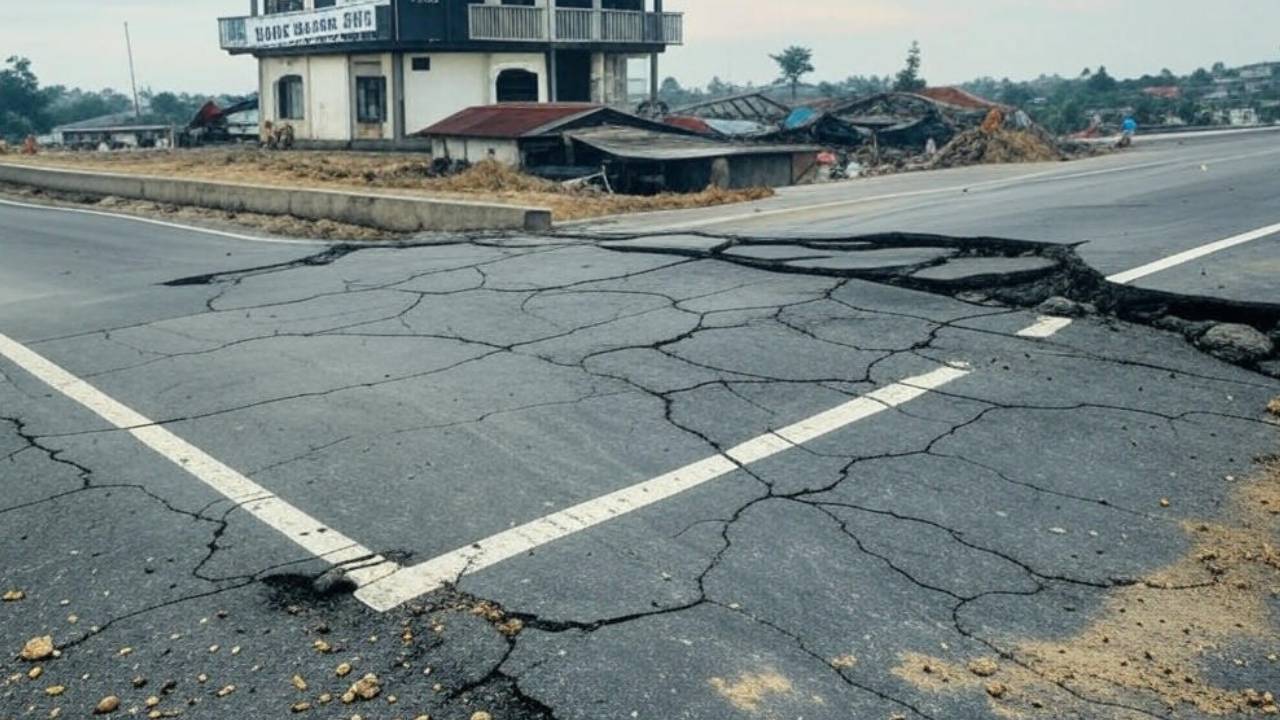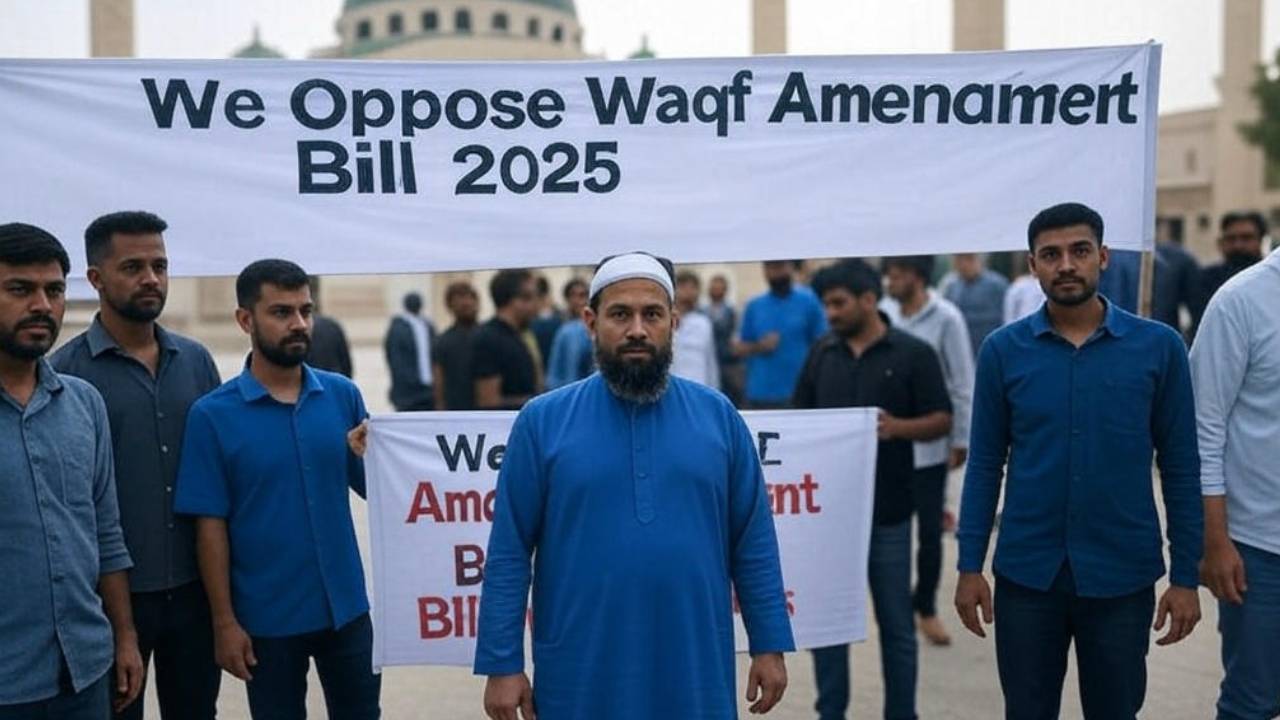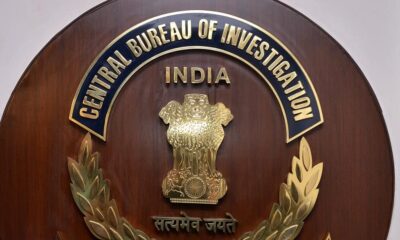india
Ex-Bihar MLC Hulas Pandey Resigns in LJP(R) Chairman Role
Hulas Pandey denies involvement in the murder of Ranvir Sena chief, Brahmeshwar Singh Mukhiya, claiming false implication by the central agency.

On Monday, former Member of Legislative Council (MLC) Hulas Pandey tendered his resignation as the chairman of the parliamentary board of Chirag Paswan’s Lok Janshakti Party (Ram Vilas). The decision came in the wake of the Central Bureau of Investigation (CBI) recently charging him in connection with a high-profile murder case from 2012.
Pandey, known for his close ties to LJP (Ram Vilas) leader Chirag Paswan, vehemently denied any involvement in the sensational murder case of Brahmeshwar Singh Mukhiya, the former chief of the private army, Ranvir Sena. Mukhiya was fatally shot by unidentified assailants in Katira under the Ara town police station in Bhojpur district on June 1, 2012.
Despite the CBI implicating him, Pandey asserted that he was falsely accused and claimed that this was part of a larger political conspiracy against him. He pointed out that his name surfaced in the case after more than 11 years, and he believes certain individuals with vested interests within the CBI may be associated with rival political parties.
While acknowledging that he harbored no personal grudge against the CBI as an institution, Pandey criticized specific officers whom he suspected of having ulterior motives. He refrained from publicly naming those individuals but hinted at his awareness of people who may have played a role in dragging his name into the murder case.
Explaining his resignation from the position of the party’s parliamentary board chairman, Pandey emphasized his desire to protect the party’s reputation and its top leaders from any tarnish. He questioned the legitimacy of the CBI’s investigation, asserting that there was no conceivable way he could benefit from the murder of the Ranvir Sena chief.
In response to the development, the CBI submitted a supplementary chargesheet in the Brahmeshwar Singh Mukhiya murder case last Friday. Previously, the agency had offered a reward of Rs. 10 lakh for concrete information leading to the identification of Mukhiya’s killers.
Hulas Pandey, who is the brother of former MLA Sunil Pandey, disclosed that Sunil had faced physical assault by Mukhiya’s supporters during a visit to the Katira-based residence of the Ranvir Sena supremo after the incident.
The murder of Brahmeshwar Singh Mukhiya in 2012 had triggered tension in Bhojpur and Patna districts, leading to public unrest, rioting, and vandalism during the procession of Mukhiya’s body from Ara to Patna. Hundreds of supporters walked on foot, expressing dissatisfaction with the state machinery’s failure to curb the rising crime rate.
india
Lakhs Unite at Deekshabhoomi and Chaityabhoomi to Celebrate Dr. B.R. Ambedkar’s Birth Anniversary
On April 14, 2025, a sea of people flooded Deekshabhoomi in Nagpur and Chaityabhoomi in Mumbai to pay heartfelt tributes to Dr. Bhimrao Ramji Ambedkar, fondly known as Babasaheb, on his birth anniversary. The atmosphere buzzed with reverence and unity as lakhs of followers came together to celebrate the life and legacy of the man […]

On April 14, 2025, a sea of people flooded Deekshabhoomi in Nagpur and Chaityabhoomi in Mumbai to pay heartfelt tributes to Dr. Bhimrao Ramji Ambedkar, fondly known as Babasaheb, on his birth anniversary. The atmosphere buzzed with reverence and unity as lakhs of followers came together to celebrate the life and legacy of the man who drafted India’s Constitution and championed social justice.
A Day of Remembrance and Inspiration
From early morning, devotees, activists, and admirers thronged these iconic sites, carrying flowers, candles, and banners adorned with Ambedkar’s quotes. Deekshabhoomi, where Dr. Ambedkar embraced Buddhism in 1956, and Chaityabhoomi, his cremation site, transformed into vibrant hubs of reflection. People of all ages—students, families, and community leaders—joined hands to honor his contributions to equality, education, and human rights.
Cultural programs, speeches, and prayer ceremonies filled the day. Local organizations hosted events highlighting Ambedkar’s role as a global icon of social reform. “His vision continues to guide us toward a just society,” said one attendee, echoing the sentiments of many.
Enhanced Security and Smooth Arrangements
With massive crowds expected, authorities ensured tight security and seamless arrangements. Mumbai’s Chaityabhoomi saw barricades and police presence to manage the flow of visitors, while Nagpur’s Deekshabhoomi welcomed devotees with well-organized facilities. Volunteers distributed water and food, ensuring everyone could focus on the occasion’s significance.
Leaders Pay Tribute
Prominent figures joined the commemorations, with Maharashtra Chief Minister Devendra Fadnavis sharing a heartfelt message: “Saluting Dr. Babasaheb Ambedkar, the Father of our Constitution and a beacon of social justice, on his birth anniversary.” His words resonated across social media, amplifying the day’s importance.
Why This Day Matters
Dr. Ambedkar’s birth anniversary, celebrated as Ambedkar Jayanti, is more than a historical event—it’s a reminder of his relentless fight against caste discrimination and inequality. His teachings inspire millions to strive for a fairer world. Deekshabhoomi and Chaityabhoomi remain sacred spaces, symbolizing hope and resilience for marginalized communities.
A Legacy That Lives On
As the sun set, the crowds lingered, unwilling to leave the places that hold such deep meaning. For many, visiting these sites was a personal pilgrimage, a chance to connect with Ambedkar’s ideals. “He showed us the path to dignity,” said a young student, clutching a copy of the Constitution.
Ambedkar Jayanti 2025 wasn’t just a celebration—it was a powerful call to uphold justice, equality, and unity. As lakhs returned home, they carried with them the spirit of Babasaheb, ready to keep his legacy alive.
india
Earthquakes Shake India and Neighboring Asian Nations: What’s Happening?
On April 12, 2025, a series of earthquakes rattled parts of India and several neighboring Asian countries, leaving communities on edge. From the Himalayan foothills to coastal regions, the tremors have sparked concern, with residents sharing their experiences and authorities rushing to assess the damage. Here’s a closer look at the unfolding situation.

On April 12, 2025, a series of earthquakes rattled parts of India and several neighboring Asian countries, leaving communities on edge. From the Himalayan foothills to coastal regions, the tremors have sparked concern, with residents sharing their experiences and authorities rushing to assess the damage. Here’s a closer look at the unfolding situation.
Where Earthquakes Hit India
The quakes, ranging in intensity, were felt across northern India, including states like Uttar Pradesh and Bihar, as well as in neighboring nations such as Nepal, Bhutan, and Bangladesh. Early reports suggest the epicenter may have been near the India-Nepal border, a region known for its tectonic activity due to the collision of the Indian and Eurasian plates. While exact magnitudes are still being confirmed, the shaking was strong enough to jolt people from their homes and offices.
In India, cities like Lucknow and Patna reported mild tremors, with some residents feeling the ground sway for a few seconds. Across the border, Kathmandu and Dhaka experienced similar disturbances, raising fears of aftershocks. “It felt like the floor was moving under my feet,” said a local from Bihar, capturing the sudden panic that gripped the region.
Impact on Communities
So far, no major casualties or widespread destruction have been reported, but the situation remains fluid. In rural areas, where infrastructure is often less resilient, cracks have appeared in some homes, and power outages were noted in isolated spots. Authorities are urging people to stay cautious, especially in earthquake-prone zones like the Himalayas.
Social media is buzzing with videos of swaying buildings and panicked evacuations, while local officials are conducting safety checks. Schools and offices in affected areas have been closed as a precaution, and emergency response teams are on standby. “We’re prepared to act if things worsen,” a disaster management official stated, emphasizing the need for vigilance.
The Indian subcontinent sits on a seismic hotspot, making earthquakes a recurring concern. Experts link this recent activity to the ongoing tectonic shifts along the Himalayan fault line, which has triggered significant quakes in the past, like the 2015 Nepal earthquake. While the current tremors appear less severe, they serve as a reminder of nature’s unpredictability.
Trending discussions online highlight how climate change and geological stress might be amplifying such events, though this remains inconclusive. Residents are being advised to follow safety drills—drop, cover, and hold on—and avoid old or weak structures until cleared by experts.
As seismologists analyze data, the focus is on predicting aftershocks and ensuring public safety. The Indian Meteorological Department and regional agencies are working together to issue updates. For now, communities are holding their breath, hoping the worst is over.
Stay informed as the story develops. Have you felt the tremors? Share your experience in the comments below!
Hyderabad
Hyderabad Erupts in Protests Over Waqf Amendment Act: Voices Rise Against Change
The protests kicked off after Friday prayers, with small yet vocal groups gathering near mosques across Hyderabad.

Hyderabad, a city known for its rich cultural tapestry, witnessed a wave of passionate protests on Friday as thousands took to the streets to oppose the recently passed Waqf Amendment Act 2025. From bustling neighborhoods to historic mosques, the demonstrations highlighted deep concerns among the Muslim community and others about the new legislation’s impact on Waqf properties and religious autonomy.
A City United in Dissent
The protests kicked off after Friday prayers, with small yet vocal groups gathering near mosques across Hyderabad. Demonstrators, including members of organizations like Darsgah-Jihad-O-Shahadat (DJS), held placards and chanted slogans demanding the repeal of the Act. “Waqf is Allah’s property!” read one sign, capturing the sentiment of many who see the amendments as a threat to the sanctity of Muslim endowments.
By afternoon, the movement gained momentum. Public meetings sprang up in areas like Old City, Tolichowki, and Mehdipatnam, drawing diverse crowds—students, religious leaders, and everyday citizens. The atmosphere was charged but largely peaceful, with organizers urging calm while voicing their grievances. “This isn’t just about Waqf; it’s about our rights,” said a protester, echoing a common thread of frustration.
Why the Waqf Amendment Act Sparks Outrage
The Waqf Amendment Act, passed by Parliament and receiving Presidential assent on April 5, 2025, aims to reform the management of Waqf properties—land and assets dedicated for religious or charitable purposes under Islamic law. Supporters, including the BJP-led government, argue it brings transparency and accountability to Waqf boards. But critics see it differently.
In Hyderabad, protesters expressed fears that the Act undermines the autonomy of Waqf institutions. Key changes, like increased government oversight and new regulations on property management, have raised alarms about potential misuse or loss of community control. “These amendments could disrupt centuries-old traditions,” warned a local imam during a rally. Many also pointed to Articles 25-30 of the Constitution, arguing the law infringes on religious freedoms.
Voices from the Ground
The protests weren’t just about placards and speeches—they were deeply personal. A young student at a public meeting shared, “My family has donated to Waqf for generations. This feels like an attack on our heritage.” Others highlighted practical concerns, like the risk of Waqf properties being repurposed or mismanaged under the new rules.
Community leaders also stepped up. Representatives from Muslim organizations announced plans for larger gatherings in the coming days, signaling that the movement is far from over. “We’re not here to cause trouble,” said one organizer. “We just want the government to listen and rollback this Act.”
Hyderabad’s Protests in a National Context
Hyderabad’s demonstrations are part of a broader wave of unrest across India. From West Bengal’s Murshidabad, where protests turned violent, to peaceful rallies in Chennai and Dharwad, the Waqf Amendment Act has ignited debate nationwide. In some regions, like West Bengal, clashes led to arrests and heightened security, but Hyderabad’s protests have so far remained orderly.
The issue has also taken a political turn. Opposition parties, including the AIMIM led by Hyderabad MP Asaduddin Owaisi, have slammed the Act as discriminatory. Meanwhile, the BJP has launched a “Waqf Reforms Awareness Campaign” to counter criticism, insisting the law benefits all communities.
As the sun set on Friday, Hyderabad’s streets grew quiet, but the resolve of protesters remained unshaken. Community groups are now planning seminars and petitions to keep the pressure on. “This is just the beginning,” said a local activist. “We’ll fight for our rights through dialogue and unity.”
For now, Hyderabad stands as a powerful voice in the national conversation about the Waqf Amendment Act. Whether these protests lead to policy changes remains to be seen, but one thing is clear: the city’s spirit of resistance is alive and well.
-

 india2 years ago
india2 years ago“Major Crash of Sukhoi Su-30 and Mirage 2000 Fighter Jets in Madhya Pradesh”
-

 Sports2 years ago
Sports2 years agoWFI meetings on April 16, elections likely to be discussed
-

 india1 year ago
india1 year agoPM Modi Meets Deve Gowda for Seat Sharing Talks
-

 india1 year ago
india1 year agoBengaluru: False threat to bomb Raj Bhavan
-

 india2 years ago
india2 years ago“AIMIM to Contest 50 Seats in Upcoming Telangana Assembly Elections”
-

 Entertainment1 year ago
Entertainment1 year agoAnant Ambani: Controversy at the Ambani Pre-Wedding Bash
-

 Entertainment2 years ago
Entertainment2 years agoRajinikanth is Moideen Bhai in ‘Lal Salaam’
-

 Karnataka2 years ago
Karnataka2 years agoWomen have to show their Aadhaar to travel free on KSRTC bus















